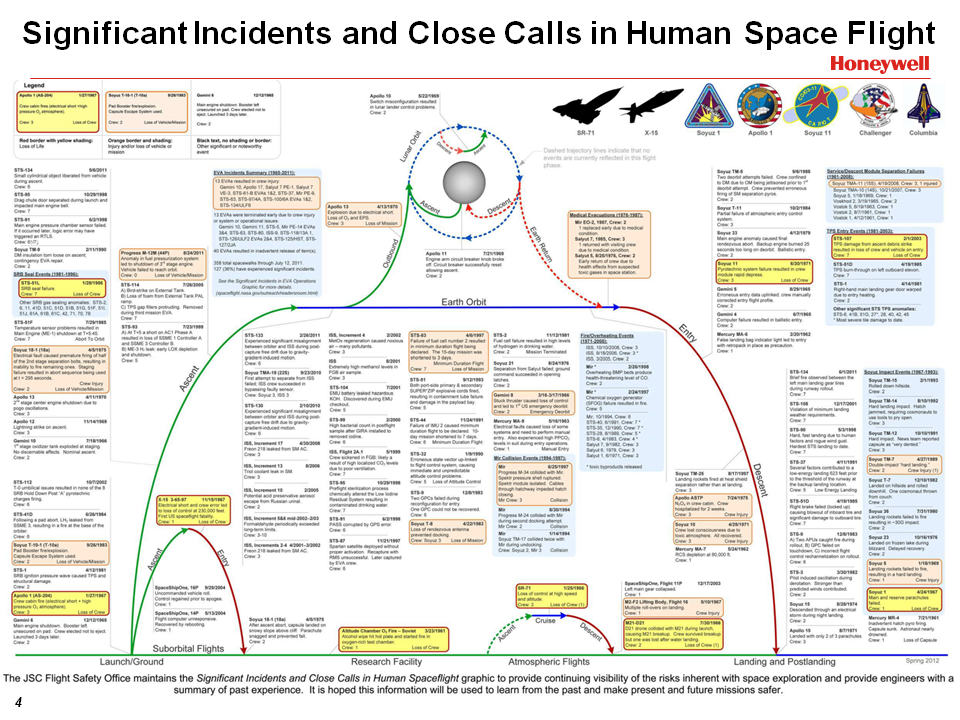|
I worked on this thing for a while but don't any more https://youtu.be/Nyn2gOimRfM Ask me about rocket engines and avionics and I'll answer unless it violates ITAR or ndas or I forget about this rsf
|
|
|
|

|
| # ? Apr 24, 2024 06:41 |
|
How far away can you feel the heat off of those things
|
|
|
|
Pretty far but you probably die from the acoustic energy before it matters
|
|
|
|
I have really big ear muffs
|
|
|
|
It's more the lungs than the eardrums
|
|
|
|
Who would win in a bar fight, BE-4 or Raptor? And if an SSME walked in on the fight, whose side would it take?
|
|
|
|
Did you work at Cape Canaveral?
|
|
|
|
The Scientist posted:Did you work at Cape Canaveral? No
|
|
|
|
Powered Descent posted:Who would win in a bar fight, BE-4 or Raptor? In a bar fight? Be-4, it's bigger. Ssme is their ungendered parent engine, so idk. maybe also be-4, because it looks more like them
|
|
|
|
is there a central flight computer that receives input from all the sensors and commands the engine mechanisms for ignition/throttle/gimbaling/etc? or is there a specific engine control computer and the engine I/O goes to the engine computer and then the engine computer talks to some other computer? how do the sensors and computers talk to each other on the rocket? do the sensors send packets of data or is it like voltages and poo poo? how big a MIRV bus could you throw with one of them there BE-4s? 
|
|
|
Bloody posted:Pretty far but you probably die from the acoustic energy before it matters Assuming it's still in test mode and firing parallel to the ground.
|
|
|
|
|
FFT posted:How far away would someone need to be to not die? Say for one person perpendicular to the nozzle and another person just facing the nozzle head-on? no idea tbh. I wouldn't want to stand much closer than, like, 2 miles probably, but that's more about when things explode than when they go right
|
|
|
|
Farmer Crack-rear end posted:is there a central flight computer that receives input from all the sensors and commands the engine mechanisms for ignition/throttle/gimbaling/etc? or is there a specific engine control computer and the engine I/O goes to the engine computer and then the engine computer talks to some other computer? avionics architectures are a big pile of tradeoffs. avionics mass is driven by harnessing, some aspects of complexity are driven by box count, sensed signals can be weak in a super noisy environment, actuators can take lots of electrical power, and distributing power and data is its own mess. One mega-flight-computer would be easier to work with in some respects (you don't have to worry about distributed systems problems as much) but I think at this point it has enough downsides that I'd be surprised if its really used in any significant modern vehicle. Things like dedicated engine controllers have been common since the space shuttle program. There's a lot of ways to skin a cat but at the end of the day you want the system coherent on "when should the engines ignite" and "when should the hold downs release". Lots of little tradeoffs that ultimately look kinda like complexity vs performance - how can you build the most performant (reliable, fault-tolerant, lowest mass) avionics system with as little complexity (time, money, testing burden) as possible. The vast majority of this complexity is driven by fault tolerance, reliability, and reusability. You can fly a rocket with just a couple of sensors and actuators, but to ensure that its operating safely and to know if you can reuse it safely you need a lot more insight. Reusable boosters pretty much doubled (or more) complexity, too - vehicles like saturn V had the instrument unit directly below the payload, but a vehicle like falcon heavy has a full suite of avionics systems on each booster core plus the second stage. Sensors are typically analog measurements (think thermocouples and pressure transducers), and computers typically talk over digital buses. 1553 is the battle-hardened veteran of shuttle and ISS, but there's lots of interest in more modern point-to-point networking technology like AFDX and ethernet. As for MIRVs I am not sure but I would guess Quite Large
|
|
|
|
How serious is bezos about putting logistic space stations in orbit to achieve 1hr worldwide delivery time?
|
|
|
|
what's the optimum altitude for that nozzle? how do you decide the flare? does the coolness of the shock diamonds at sea level factor into that decision?
|
|
|
|
Dr. Fishopolis posted:what's the optimum altitude for that nozzle? how do you decide the flare? does the coolness of the shock diamonds at sea level factor into that decision? not sure, I'd guess not that far above sea level given that it's a booster engine. I'd guess that people smarter than me could figure it out from the publicly available data on the engine tho shock diamonds do rule
|
|
|
|
here is my favorite resource on failures https://c3.nasa.gov/dashlink/static/media/other/Introduction1.html just look at all of these! 
|
|
|
|
what bolts do you have to use or specify?
|
|
|
|
Could I make a small one of these to strap to the back of my truck? How much does this thing weigh could I just put one of these on it?
|
|
|
|
Technically I'm a Blue Origin Rocket Scientist also. Took my A+ test in an empty building in Kent, Wa in like 2000. Bezos later bought that building and made it SpaceX HQ. Close enough for me.
|
|
|
|
Weka posted:Could I make a small one of these to strap to the back of my truck? yes Weka posted:How much does this thing weigh could I just put one of these on it? probably not
|
|
|
|
Bloody posted:here is my favorite resource on failures That image is not very readable so I googled this up: https://sma.nasa.gov/SignificantIncidents/
|
|
|
|
Bloody posted:I worked on this thing for a while but don't any more
|
|
|
|
a lot of concrete + steel. This nasa thing has some words + pictures about the SSME setup https://www.nasa.gov/centers/marshall/about/star/star130612.html but basically you just gotta build a big rear end building that can react the loads of a rocket engine at full thrust (plus whatever safety & design margins you're using) that, ideally, won't be harmed / destroyed by whatever your idea of a worst-case failure of your test article looks like. fortunately, these two requirements kinda go hand in hand. the actual holding in place can either use test specific interfaces, like this gas generator being tested at marshall:  or if it's a flight assembly you can use the flight interfaces, which have to be able to handle the loads involved anyway here's half an hour of SSME failures to get some idea of what those can look like. the worst ones are where it goes from "that looks like an engine" to "that is solid white" in one frame. https://www.youtube.com/watch?v=YzUgq14kBwA and here's a neat cross section of the F-1 test stand I just came across https://commons.wikimedia.org/wiki/...et_7_of_15).tif Bloody fucked around with this message at 18:36 on Mar 1, 2021 |
|
|
|
Bloody posted:here's half an hour of SSME failures to get some idea of what those can look like. the worst ones are where it goes from "that looks like an engine" to "that is solid white" in one frame. Bloody probably already knows this but before Challenger was destroyed, all the astronauts were way more terrified of the SSMEs than the SRBs
|
|
|
|
Bloody posted:a lot of concrete + steel. This nasa thing has some words + pictures about the SSME setup https://www.nasa.gov/centers/marshall/about/star/star130612.html cool, ty
|
|
|
|
I got to watch a couple of SSME tests at Stennis as a kid, including one at night, and it was the coolest drat thing. You can't really see the engine, but it's a big fuckoff concrete bunker belching insane amounts of steam.
|
|
|
|
How does throttling actually work on one of these? Just a pair of valves that supply proportionally less fuel and oxidizer, or are you throttling the preburner so the combined turbopump is running slower? The wiki page says it can throttle down to 65% or lower, which is a pretty significant throttle range for a first-stage booster.
|
|
|
|
Yeah trying to not be too specific here but generally the goal is to reduce the mass flow rate of your propellants in an equal ratio so you've got a few options there: reduce the flow rates directly with main ox/fuel valves or reduce pumping by throttling down whatever is powering your pump. Tricky parts of throttling are around like maintaining combustion stability, not cavitatimg or otherwise loving up turbomachinery, and not grossly over expanding your nozzle flow. Also just the usual engine problems around keeping temperatures and pressures everywhere within tolerances or whatever, but that's pretty much table stakes
|
|
|
|
Trying to remember exactly how ssme throttled but I don't remember offhand maybe this lengthy pdf mentions it? https://ntrs.nasa.gov/api/citations/20120001539/downloads/20120001539.pdf?attachment=true
|
|
|
babyeatingpsychopath posted:The wiki page says it can throttle down to 65% or lower, which is a pretty significant throttle range for a first-stage booster.
|
|
|
|
|
Throttling is easier in a vacuum because over expansion isn't an issue
|
|
|
|
I worked at the competition to OP. Ask me anything
|
|
|
|
Zeinin posted:I worked at the competition to OP. Ask me anything NASA? ROSKOSMOS?
|
|
|
|
babyeatingpsychopath posted:NASA? ROSKOSMOS? The other billionaire one.
|
|
|
|
Is this all vanity projects? What’s the hope for profit here?
|
|
|
|
poisonpill posted:Is this all vanity projects? What’s the hope for profit here? Satellite launch is a pretty big business. Historically, it's been a hard business to break into because of the enormous costs involved, and so it was the province of governments and enormous aerospace corporations like Boeing and Lockheed Martin. It's only recently that "new space" startups have started to prove themselves as viable in the market. Blue Origin's BE-4 rocket engine, the one in the OP, was selected for ULA's new Vulcan booster (which is to succeed the current workhorse Atlas and Delta vehicles), and will also be used on Blue Origin's own "New Glenn" orbital booster. On a smaller scale, their suborbital New Shepard rocket looks close to being ready to start carrying human tourists to the edge of space for a few minutes at a time. As for the other big one, SpaceX's reusable Falcon 9 first stage has brought down launch costs by something like a factor of six (it's the first real shakeup in the industry in decades), and their Dragon spacecraft is now regularly ferrying NASA astronauts to and from the International Space Station. NASA also just recently selected SpaceX's great big Starship design (you may have seen videos of it landing and/or exploding in test flights) as the lander craft for Project Artemis.
|
|
|
|
Are they still using those stabilized touch screen things or did that turn out to be as dumb as it seemed?
|
|
|
|
|
poisonpill posted:Is this all vanity projects? What’s the hope for profit here? Oddly enough, SpaceX destroyed the ability of anyone except for SpaceX to make a profit in space launch. They are so cheap that they can pick their price, and they can choose to bankrupt any other launch provider. However, it is possible that 10~20 Falcon 9 cores plus a production line for 50~100 second stages a year would just completely absorb the launch market. If Starship works, then there is literally never a reason to fly on anything else other than national security/pride.
|
|
|
|

|
| # ? Apr 24, 2024 06:41 |
|
Zeinin posted:If Starship works,
|
|
|




































